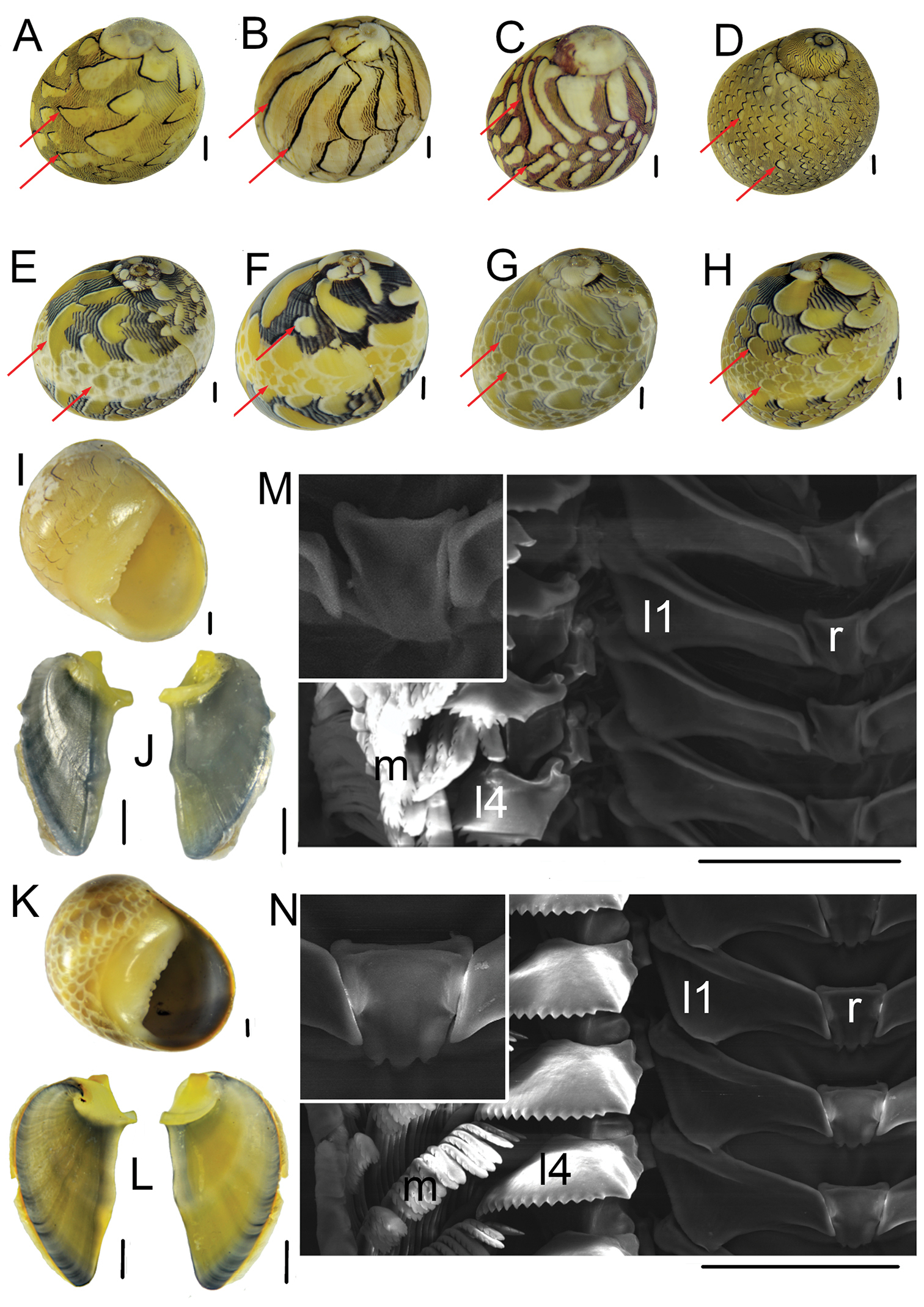
|
||
|
Colour patterns of shells, opercula, and radulae of the Neritina virginea and Neritina meleagris analysed. The red arrows highlight the differences between the leading edges of colour patterns of both species: N. virginea has the leading edges outlined in heavy black, while N. meleagris has the leading edge outlined in white or black and white. A Neritina virginea_1 B Neritina virginea_2 C Neritina virginea_3 D Neritina virginea_4 E Neritina meleagris_1 F Neritina meleagris_2 G Neritina meleagris_3 H Neritina meleagris_4 I ventral view of shell of Neritina virginea J operculum (outer and inner views) of Neritina virginea K ventral view of shell of Neritina meleagris L operculum (outer and inner views) of Neritina meleagris M radula of Neritina virginea (SEM), with rachidian tooth enlarged in the upper left quadrant N radula of Neritina meleagris (SEM), with rachidian tooth enlarged in the upper left quadrant. Abbreviations: l1 first lateral tooth, l4 fourth lateral tooth, m marginal teeth, r rachidian tooth. The specimens with the number “1” are from Camocim beach (Ceará State, NE Brazil) and those with numbers “2”, “3”, and “4” are from Barra Grande beach (Piauí State, NE Brazil). The numbered specimens of N. virginea (1, 2, 3, and 4) and N. meleagris (1, 2, 3, and 4) are the same specimens used in the phylogenetic analysis of Figure 1. Scale bars: 1.0 mm (A–L); 100 μm (M, N). |